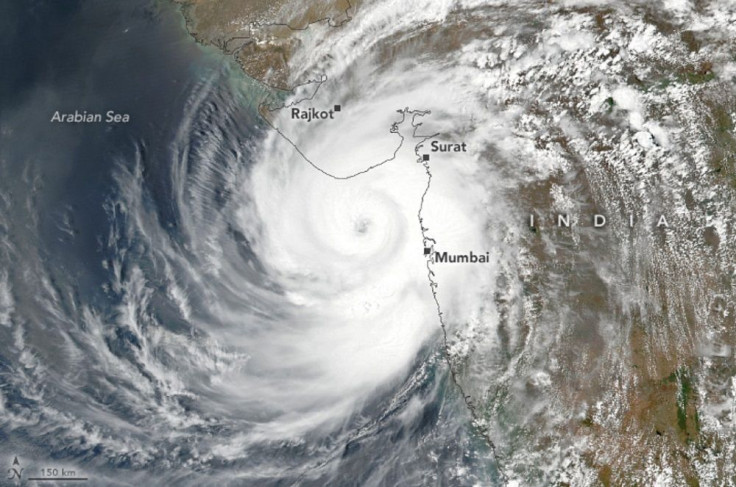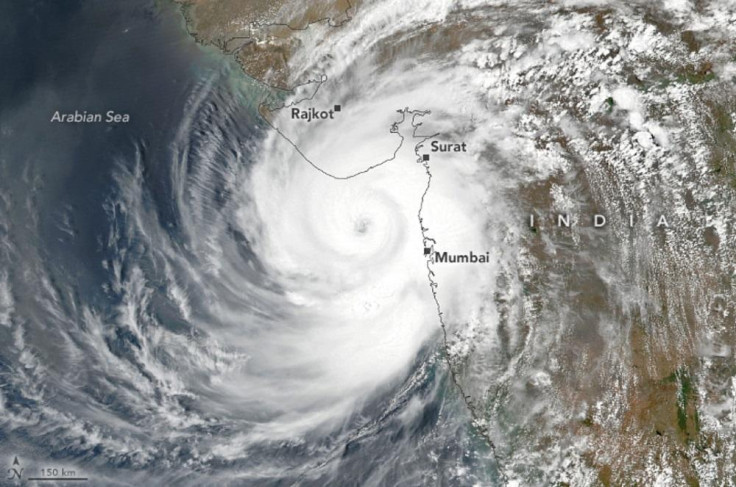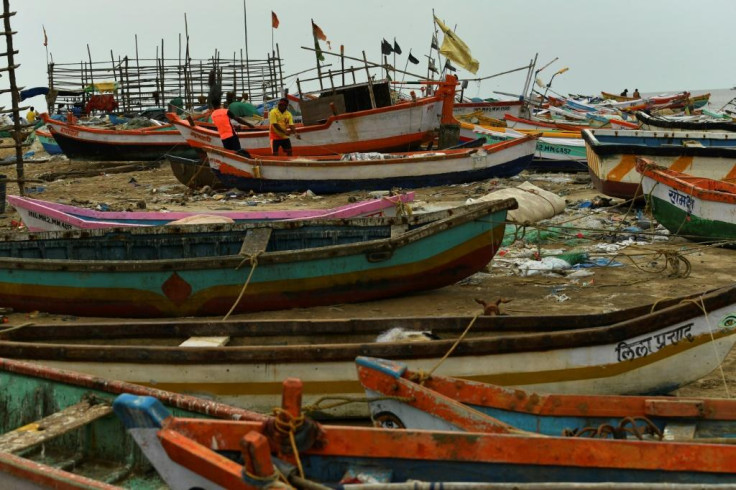Tauktae: Satellite Image Shows Massive Cyclone Approach COVID-Stricken India

A NASA/NOAA satellite captured an image of a massive tropical cyclone that made landfall in COVID-stricken India on Monday.
Tropical cyclone Tauktae was already causing rampant destruction even before it made landfall in India's western state of Gujarat. Equivalent to a Category 3 or 4 hurricane, it took several lives and forced thousands to evacuate from their homes in several states even as it was approaching the virus-stricken nation.
NASA and the National Oceanic and Atmospheric Administration's (NOAA) Suomi NPP Satellite captured Tauktae just hours before it made landfall between Porbandar and Mahuva on Monday. In the natural-color satellite image, which was shared by NASA Earth Observatory, Tauktae can be seen making a close approach to the coast.

Photo: Suomi NPP-VIIRS/NASA/NOAA
It reportedly had maximum sustained winds of 125 miles per hour and gusts of 145 miles.
"That made Tauktae the fifth-strongest storm observed in the Arabian Sea since 1998," NASA Earth Observatory said.
The India Meteorological Department provided an update Monday evening, citing the cyclone's expected trajectory, and said it was expected to "weaken gradually."
Cyclones are actually "uncommon" in the Arabian Sea, NASA Earth Observatory said, noting that it only sees one or two storms each year. They are mostly "weak and short-lived." However, powerful storms can form there if the conditions are right. This includes calm upper-level winds and warm surface temperatures.
The rising water temperatures have also led to the region experiencing more cyclones than usual. Since satellite records in India began in 1980, this is said to be the first time pre-monsoon cyclones in the Arabian Sea are being observed for four consecutive years.
Tauktae caused a trail of destruction in the western state of Maharashtra that led to power outages, damages and flooding Monday, forcing the suspension of operations of Mumbai city's main roads, airports and rail system, Reuters reported.
Over 400 people onboard two barges that went adrift close to the Mumbai coast were rescued, while 25 fishing boats were reported missing. Even vaccination drives in Gujarat and Mumbai had to be canceled because of the weather Monday.
There were also concerns about the safety of endangered Asiatic lions in Gujarat. Some of the animals were moved to higher ground, the principal chief conservator of forests in Gujarat, Shyamal Tikadar, told Reuters.
"These are special circumstances. The administration is busy with the COVID-19 challenges, and is now gearing up to deal with the impact of the cyclone," Tikadar said.

Cyclone Tauktae -- India's first major tropical storm this season -- is moving northwards, bringing heavy rains, thunderstorms and strong winds to several states Photo: AFP / Indranil MUKHERJEE





















